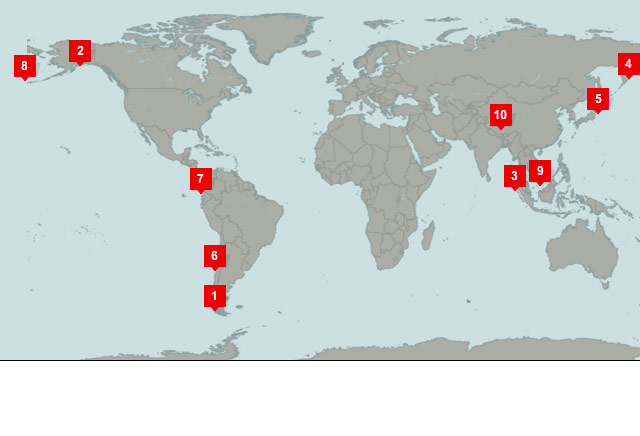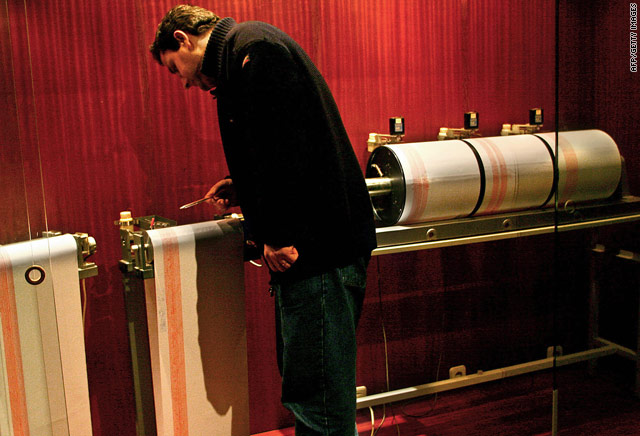The olive branch came just before the government agreed to consider Team Anna's demand to put the Prime Minister under the Lokpal's purview and merge the CBI's anti-corruption wing with the proposed ombudsman. The government has agreed to enact the Judicial Standards and Accountability Bill to deal with corruption in higher judiciary. Government agreed that this legislation would be vetted by the Hazare group.
The sticking points are: Civil society's demand to include the lower bureaucracy in the Lokpal's ambit, enacting Lokayuktas for states, extending Lokpal's jurisdiction to cover the conduct of MPs inside Parliament, adoption of a citizen's charter by every government department that lays down the duties of officials and punishments for non-performance.
The civil society has asked the government to give a commitment in writing that the Lokpal Bill will be passed in the current session itself after withdrawing the official bill from the standing committee or allowing it to lapse.
The government, which described the talks as "fruitful", plans to respond tomorrow. It will discuss the issue at an all-party meeting the Prime Minister has called tomorrow. Singh will also review the situation at a meeting of the Cabinet Committee on Political Affairs.
Last Thursday, TOI had suggested precisely this as a solution to the logjam, but members of the government and Congress had at the time indicated that it wasn't a feasible idea. On Tuesday, however, it chose to be flexible.
In fact, there was a clear attempt to de-escalate tension, with the government and Team Anna appearing to move closer to an understanding on two contentious issues. During the talks through the day, the government indicated that it was ready to put the PM within the Lokpal's jurisdiction with riders to protect the top office from motivated allegations. The Hazare camp appeared to agree that corruption in higher judiciary should dealt with a proposed law on judicial standards and accountability.
Although talks will continue on Wednesday and the issue will be discussed at the all-party meeting in the afternoon, the possibility of an early resolution looked slim with Hazare insisting on carrying on with his fast and asking that the Lokpal Bill be sent directly to Parliament, skipping Standing Committee scrutiny.
While finance minister Pranab Mukherjee, the government's chief negotiator, termed the talks "fruitful", representatives of Anna Hazare - Prashant Bhushan , Arvind Kejriwal and Kiran Bedi - tried not to encourage hopes of a breakthrough.
More crucially, Hazare insisted on carrying on with his fast despite the growing risk of damage to his kidneys and in defiance of advice from his doctors. Addressing the crowds at 9.10 pm, he said he had refused medical advise to take an IV drip, and was ready to die for country. He also warned against attempts to remove him forcibly, asking protestors assembled at the maidan to form a barrier if "any government people come here".
The leader also indicated that the government should hurry up on reaching an agreement in view of his health parameters. "Doctors are saying there is some damage to my kidneys, but my inner voice has told me and I should not be scared of death," he said.
The fast ensured that the civil society faction continued to hog sympathy just after the government through the PM's letter tried to seize the initiative in the battle of wits. The move sought to achieve multiple objectives: From expressing concern over Anna's falling health to counter the perception of cussedness to pull off an image makeover by appearing to be a partner in the fight against graft rather than an adversary.
But there was an attempt to disarm the Hazare group of their chief grouse: That the proceedings in Parliament will be rigged since it will not get to discuss the Jan Lokpal Bill at all. Faced with the allegation that they did not believe in parliamentary supremacy, the civil society faction said that their real quarrel was that the government had fixed the parliamentary proceedings. Seeking to blunt the plank, government strategy was to ensure that Team Anna was completely on board on the move to refer the Jan Lokpal Bill to the standing committee, even if this clearly means that not all of its provisions would be accepted. A middle ground had to be clearly defined, as the government does not want to face a fresh stir later.
However, Hazares' determination to carry on with his protest ensured there was no respite for the government. His insistence to call off his fast in defiance of medical advice will ensure that Anna camp continues to hog sympathy, while putting the government in a fix over how to deal with what threatens to be big political headache. While the political cost to government of a dip in Anna's health cannot be exaggerated, it also has to factor in how the attempt to forcibly hospitalize the septuagenarian.
The PM's conciliatory letter in which he voiced concern about Anna's health, was the most critical part of a larger and concerted move through Tuesday by the government to engage with Team Anna.
Changing its earlier tack of using intermediaries to talk to Team Anna, law minister Salman Khurshid met with Anna lieutenant Arvind Kejriwal in the first direct contact between the two sides on Tuesday afternoon. Later in the evening, Team Anna and the government met at finance minister Pranab Mukherjee's office.
Singh's letter and a quiet meeting between law minister Salman Khurshid and Team Anna leaders Arvind Kejriwal and Akhil Gogoi led to a formal exchange at the office of finance minister Pranab Mukherjee. Mukherjee, named Prime Minister's chief negotiator, met Kejriwal, who was accompanied by Kiran Bedi and Prashant Bhushan. Khurshid was also present.
The all-party meeting called by the government on Wednesday will try to draw the response on parties on how far they will back the peace initiatives. The government is quite prepared to recast the Lokpal law substantially but wants parties to indicate where they stand on contentious issues like inclusion of lower bureaucracy, higher judiciary and conduct of MPs in Parliament.
On Tuesday, we front-paged a TIMES APPEAL. And we are heartened to see the first signs of thaw. But the peace process has only just begun; the last thing the nation wants or needs is for it to be derailed. We're therefore taking the unusual step of re-running the Appeal, because it will be as relevant tomorrow as it was yesterday...
TIMES APPEAL : Last Thursday, The Times of India offered three solutions (while acknowledging the legal/constitutional roadblocks to each one of them) to break the logjam: (1) a referendum; (2) an MP introduces Team Anna's draft as a private member's bill and Parliament debates both the government and the Jan Lokpal versions; (3) the issue be referred to an eminent persons' committee. We would not be so immodest or foolish as to believe that a better solution does not lie outside of the three proposed by TOI. But there can be no second opinion on the need to find common ground. Both the government and Team Anna claim to be doing what they're doing "for the people". If that be so, neither side should allow ego to come in the way of a solution that best tackles the curse of corruption and serves the cause of India and its people. This is a moment in our history that calls for humility and guts, not hubris or bravado.
TIMES VIEW: Even those who disagree with the form of Anna's protest cannot quarrel with the cause, or with the nationwide public upsurge he has created. But now that the government has agreed to formally refer the Jan Lokpal Bill to the standing committee of Parliament, he should call off his fast before his health deteriorates any further. The fight is far from over, and he needs to preserve his energy for the road ahead. Source:Times Of India





